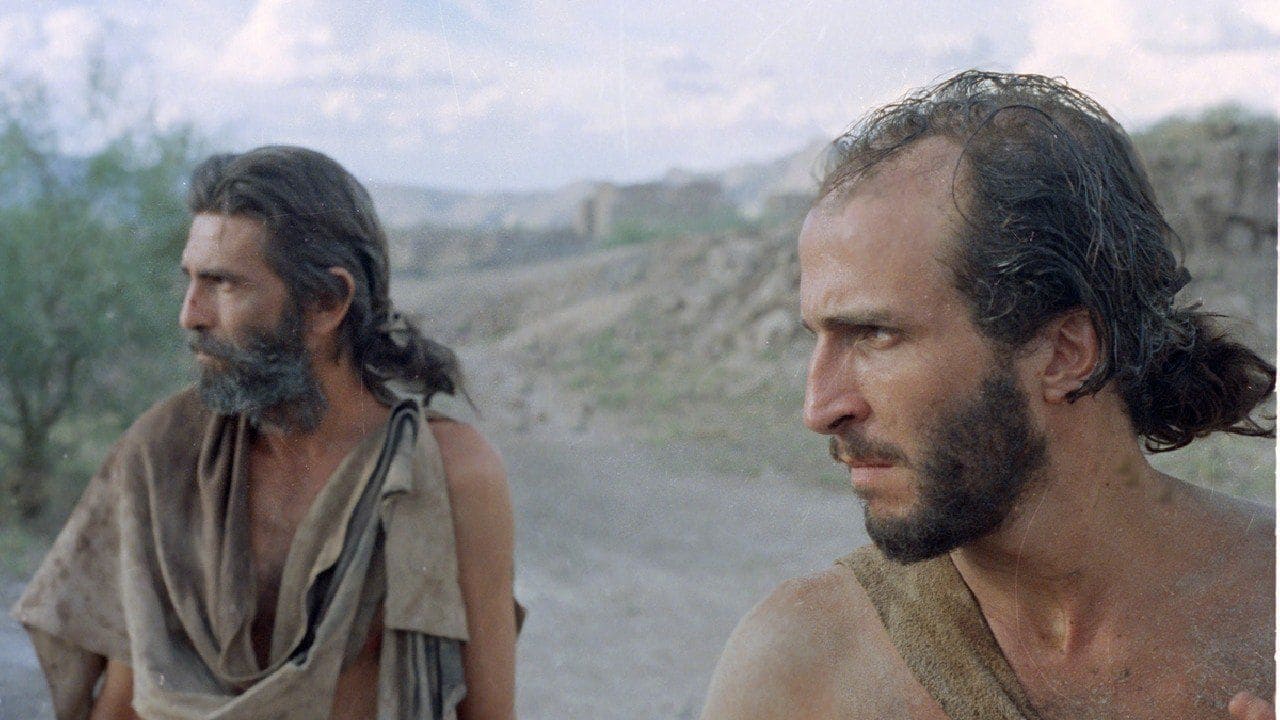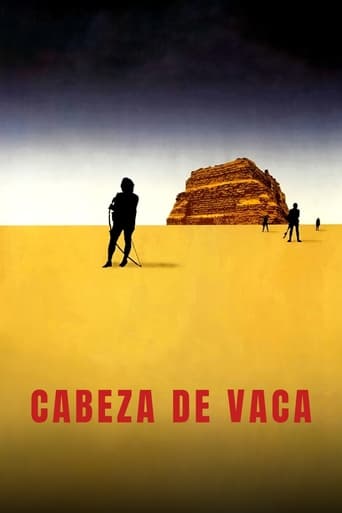



Very well executed
One of my all time favorites.
It is an exhilarating, distressing, funny and profound film, with one of the more memorable film scores in years,
View MoreIt's simply great fun, a winsome film and an occasionally over-the-top luxury fantasy that never flags.
View MoreThe conquest of a new world on behalf of the Spanish crown in the 16th century was built on atrocity and deceit, fueled by lies and rumours, greed and ambition. But also failure and anguish. Cabeza de Vaca is one such tale of failure and anguish. Cabeza, acting as the treasurer for Captain Narvaez's expedition, is shipwrecked off the Florida coast and picked on by natives. The historical details of his journey and gruelling subsequent life under capture are skewed though, the movie does not make attempts at historical realism, it goes for the primitive and spiritual. Or this is how it would be if the soldiers on the raft got rid of Aguirre and drifted further downstream to wash up in Herzog's Cobra Verde and become slaves to a shaman and his armless midget helper.The world we're shown is at once horrible and wonderful and director Etchevveria photographs it as both. For big swathes of time the movie is without dialogue and we're crouching on the dirt as the natives perform elaborate rituals that mean nothing to us. The words are lost in the translation but the ceremonial aspect remains. Bodies covered in mud, painted blue and ghastly white, adorned with feathered headpieces, witch doctors making voices and calling out to something, Cabeza de Vaca, both movie and protagonist, observes it all with a half-mad stare and twitching hands.When the survivors of the expedition reach Spanish hands again, one of them exalts the audience with tales of golden cities in the north and shaman potions that give the drinker the sexual prowess of 20 mules. Coronado traveled as far north to New Mexico to discover the 7 Cities of Gold probably on one such impossible tale recounted around the fire by drunken conquistadors desperate to believe. The will to empire is not only the pursuit of the mad and the hopeless, the ambitious and the greedy, but also in itself the result of myth and poetic fabrication, a self-fulfilling prophecy that becomes true by the simple fact it has been pursued. The biggest flaw in the movie is the protagonist. Every time Juan Diego opens his mouth or gesticulates the results are cringeworthy. Manic ferocity came natural to Kinski because he was manic, Diego on the other hand chews scenery like he's playing this for the theater. When he's lost in his own thoughts and acts mad, the results are significantly better.A filthy gaunt figure dressed in rags is climbing on ragged redrock terrain, walls of rock rising on all sides, he can barely traces his steps but there's nowhere to trace them to, he's a strange man lost in a strange violent world that makes no sense - the movie is his anguished cry in the wilderness echoed all around him like the wilderness is crying back at him. The final image is an ecstatic metaphor, like something Herzog would have improvised, and it's a stunning way to close the film.
View MoreThe first review is right-on. Read the original text and one comes away with a different story. The actual name of the book is "La Relation", meaning The Relation and is but a report to the King of Spain. Hunger was so much a part of the story, which is represented well, but more interesting is probably the concept that a mixed racial group of people, three Catholics and and African, were interacting with the locals and they were in some respects taken in. I wonder more about the relation between these four surviving members. I just think that it is ironic, considering present day politics, the make up of the Cabeza de Vaca party.www.pelicancafe.net
View MoreThere are many historical inaccuracies in this film if one considers it based on de Vaca's letter to the King of Spain detailing his ordeals and adventures. Having read Haniel Long's amazing little book on the subject in which he imagines another letter from de Vaca to the king after de Vaca has been back in Spain for some time in which he tries to convey the sense of what is "civilized" and what is "savage," I not only appreciate what the makers of this film were trying to say, but consider it a masterpiece. Another source is the famous Lord Buckley beat monologue of the 1950's called "The Gasser" about Cabeza de Vaca. That great old hipster also homes in on the essential truth about de Vaca's letter to the King: that there is a power, for healing and compassion, which is suppressed in civilized society and which, if not used, "recedes from us." This is the message of the film, and if some characters and situations and even whole tribes were invented, it is dramatic license in the service of a great theme.
View MoreUtterly fascinating movie that doesn't go for the Hollywood ending (ala "Dances with Wolves"). Purportedly from the diaries of Cabeza de Vaca, a treasurer for Charles the Fifth of Spain, the film goes from the brutal realism of war to a mystical tour of Indian life to the sad reality of Spanish conquest. This film is a must-see.
View More